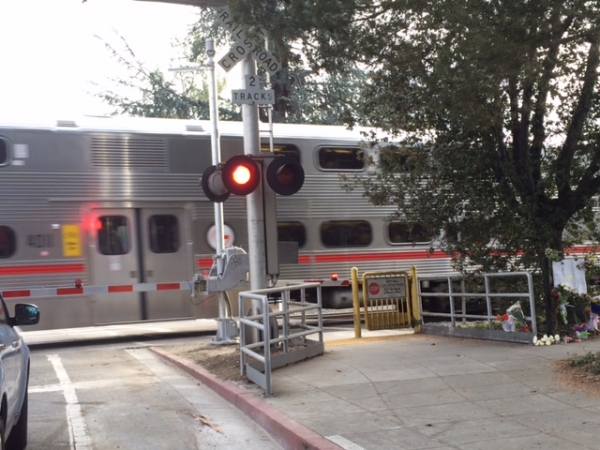
https://n2v.almanacnews.com/blogs/p/print/2018/12/20/who-will-you-blame-for-the-coming-menlo-park-disaster
Local Blogs
By Dana Hendrickson
Who Will You Blame For This Coming Menlo Park Disaster?
Uploaded: Dec 20, 2018Traffic congestion remains the number one complaint of Menlo Park residents. And our city government, like us, feels helpless, as it cannot stem the growth of vehicles on our streets. While new regional public transportation programs are frequently cited as promising solutions, these are expensive and take "forever" to build. And, ironically, some projects actually make traffic congestion much worse. The Caltrain electrification program is a prime example. Caltrain plans to introduce electric-powered trains in early 2022 and subsequently double the number of daily trains. The good news: these will be quieter, environmentally less harmful, and can run more frequently. The bad news: crossing gates will be down more often and produce nightmare traffic congestion, especially at commute times.

Imagine how angry and frustrated we will feel in about five years when we are stuck in traffic on Ravenswood, Oak Grove, Glenwood, El Camino and Middlefield, and we realize meaningful relief is not possible until 2030 - at the earliest - and even then traffic congestion will remain intolerable unless our city has chosen the best possible grade separation solution in 2019. Also, note that Caltrain will have no incentive to build additional grade separations in Menlo Park once initial ones are installed. There will not be any “do-overs”.
The best approach separates streets from tracks at as many key locations as possible. But that is not the current city plan. Our prior city leaders decided in May to build only one grade separation - a Ravenswood underpass. In October 2017, some residents asked the city council to study an alternative that would install train bridges over Ravenswood, Oak Grove and Glenwood and connect them with an attractive fully elevated and open rail structure in the train station area. An attractive plaza that extends underneath would enhance the appearance of this business district and enable pedestrians and bicyclists to more conveniently travel between Santa Cruz, Merrill and Alma. This solution would also require minimal street closures, as none would be lowered. In May - seven months later - these residents again requested a fully elevated grade separations study and the city council instructed staff to come back with a proposal. This study would be performed in parallel with continued work on an application for funding the Ravenswood underpass. The city application could be modified after submission IF the city decided fully elevated grade separations were a better solution for our community. At the December 11 City Council meeting - another seven months later – staff presented a scope for the study that lacked a well-defined set of deliverables and introduced restrictive conditions on potential designs. This act and the disturbing lack of urgency should concern every resident and business owner. These also raise genuine concerns about the objectivity of city staff and the importance it has assigned to this task. Note that most of the work required to prepare a study proposal is performed by the consultant AECOM, not city staff.
Residents can only hope that the new city leadership recognizes the importance of completing this study in 2019. Then a fair comparison can be made between the Ravenswood-only and the fully elevated grade separation alternatives. If our community decides the latter is preferred it is better to know this as soon as possible to avoid unnecessary project delays. If the City Council does not ensure completing this study is high priority, we will have no one to blame but them - and ourselves.
Learn more about Menlo Park planning for grade separations.
View a discussion of Menlo Park grade separations in the Almanac Town Square.